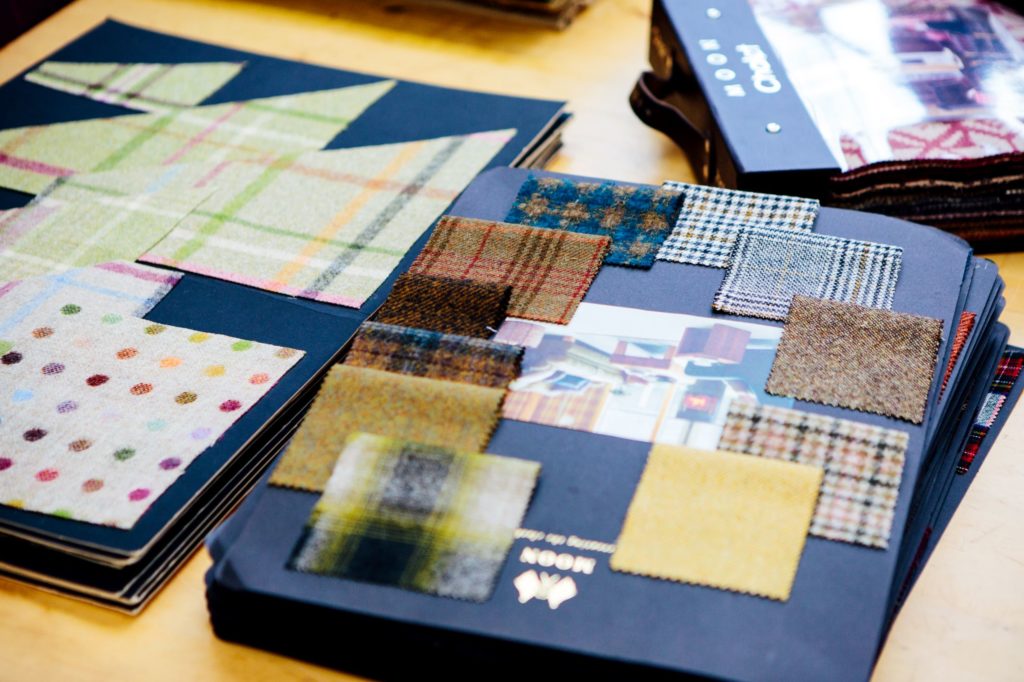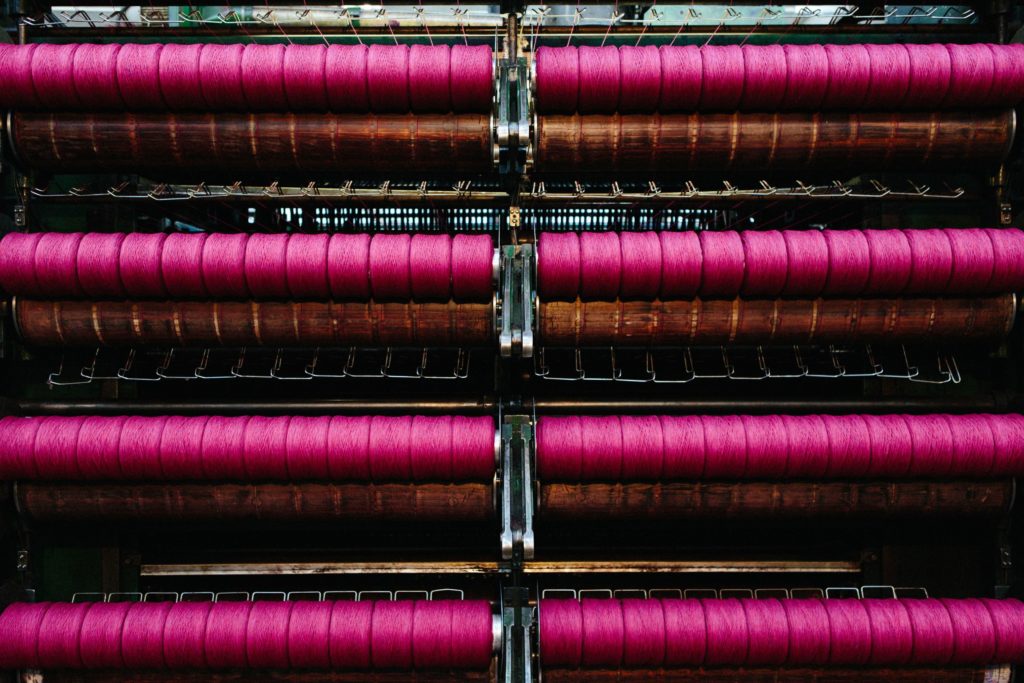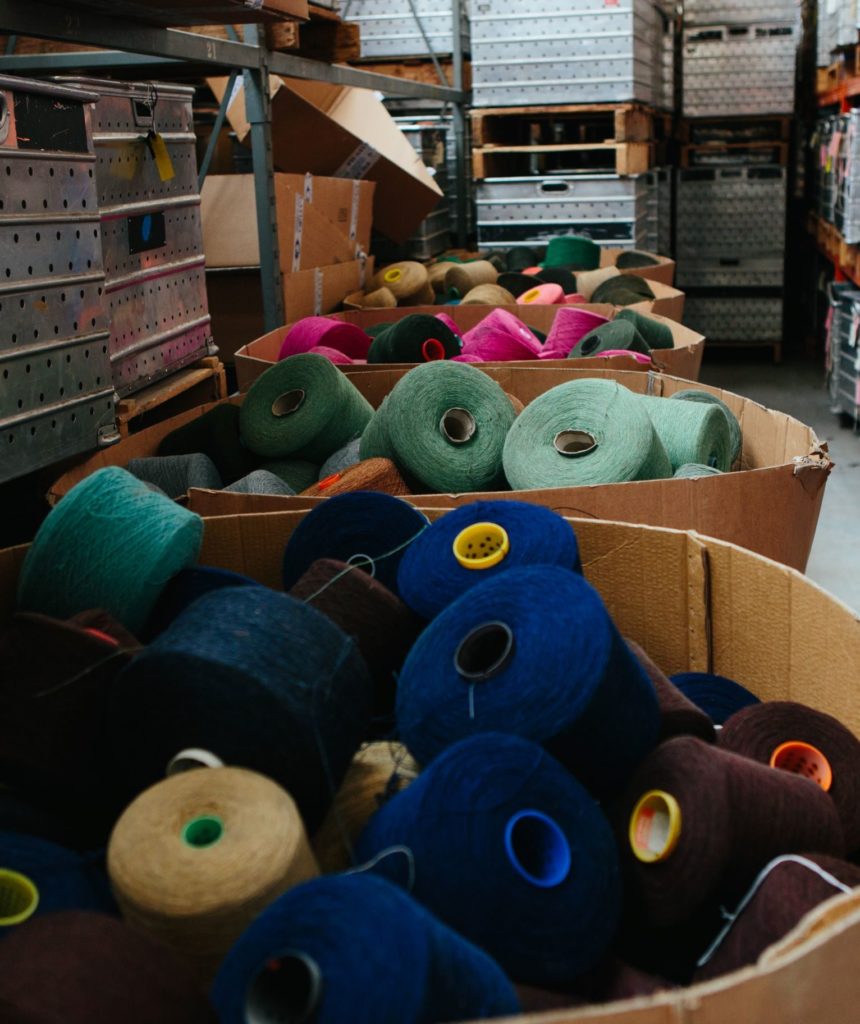New Colour Measurement Tools for Abraham Moon & Sons
With 30 years in the textile industry Mick Dixon, Yarn Processing Manager at Abraham Moon & Son, has developed a broad and deep knowledge of the dyeing process. At the Moon mill in Guiseley, West Yorkshire – the town where the company has been based since it was founded in 1837 – his team ensures consistency in the colour of each luxury Moon fabric and accessory.
Mick starts with the blend number (e.g. 106d) and works backwards, breaking it down into the specific dye colours needed to achieve the right effect. It is a complex and creative process, done almost entirely by eye in a lightbox – and as wool can vary from year to year and even from sheep to sheep, Mick draws on his skills and experience to make subtle adjustments that maintain a consistent shade.
For quality control and audit the mill uses a spectrophotometer, a specialist colour measurement tool that allows for accurate matching and allows the team to keep a record of readings for future reference. Ultimately the process relies on the unique expertise of experienced dyers.

“A lot of this process is trial and error and our experience allows for a good level of accuracy,” Mick explains. “At Moon we started considering how we could make the colour-matching process more efficient with digital technology.”
Moon has been a core partner of Future Fashion Factory since the beginning, helping to set the industry challenges that inform our Core Research Themes. When the Programme’s first innovation funding call was announced in early 2019, the company was ready to submit a project application that was approved that spring.

Collaborating with Professor Stephen Westland and research assistant Keith Findlater at the University of Leeds, the project had two distinct parts: to analyse the colour measurement process and understand the available data; and to explore how this data could feed into a predictive model determining the colour requirements for blended fibres.
As Professor of Colour Science and Technology, Stephen has worked with numerous industry partners and published around 200 papers, book chapters and books on colour science, design and imaging. With his expertise in machine learning and analysis, he also leads Future Fashion Factory’s Core Research Theme on data-driven design.
The first phase saw Stephen and Keith meeting with the production team at Moon to examine how samples are prepared and presented, while Keith also took standard blends and pads from the mill for further analysis.
They looked at how existing technology could enhance the process, for example, whether VeriVide’s DigiEye tool could scan a sample and immediately identify the necessary adjustments.
“That was when we realised that the issue wasn’t with prediction – it had been in measurement all along,” Mick says.

“Samples are prepared slightly differently by each person, so we need to standardise the whole process and guarantee more consistent data for our existing colour measurement tools. We invested in a new padding machine to solve this problem, so the pad will be the same even when different teams are working.”
The padding machine represents a capital investment of just over £31,000 as a result of the original project and has already been used for its first few jobs. Mick confirms that the pads are visually uniform regardless of who is using the machine.
By decreasing the waste produced in manufacturing and minimising product sold at a discount due to quality issues, improved colour consistency will protect Moon’s margins and reduce its environmental impact.
In addition, the company has started investigating new equipment such as a specialist carding lab for quality testing and sampling, which would allow for further gains in productivity and efficiency and relieve the pressure on production staff to manage the process by eye.
“This new approach doesn’t negate our knowledge, creativity and skill, but it does make our jobs much easier,” he adds. “We’ve been doing this for years but we can’t keep doing the same thing forever.”
“Without this project we absolutely never would have looked at the issue from this perspective. I would absolutely do it again.”
